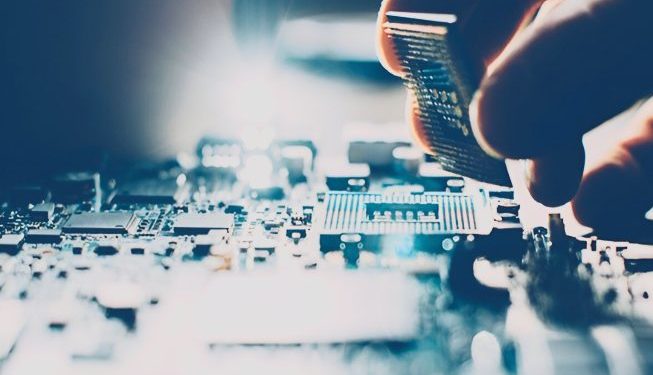Low volume PCB assembly refers to the process of producing and assembling a small quantity of printed circuit boards — typically ranging from a few units to a few hundred. This type of assembly is ideal for startups, prototype development, pilot production, and specialised electronics that don’t require large-scale manufacturing.
Unlike high-volume production, which focuses on efficiency and cost reduction through mass production, low volume PCB assembly prioritises flexibility, speed, and precision. It allows engineers to test new designs, make modifications, and validate performance before moving into full-scale production.
This service is particularly valuable for companies developing innovative technologies, where time-to-market and adaptability are crucial. With low volume assembly, businesses can introduce products faster, test customer feedback, and reduce the financial risks associated with large batch production.
The Process of Low Volume PCB Assembly
The low volume PCB assembly process follows the same fundamental steps as standard PCB production but on a smaller scale, offering greater attention to detail and quality control. Below are the key stages involved:
1. Design and File Preparation
The process starts with the submission of Gerber files, Bill of Materials (BOM), and design schematics. These documents help the manufacturer analyse layout specifications and component placements before production begins.
2. Material Procurement
For low volume runs, sourcing the right materials and components is critical. Manufacturers often keep a wide inventory of parts to minimise lead times and ensure quick turnaround, especially for prototype builds.
3. Stencil Creation and Solder Paste Application
A stencil is created to apply solder paste onto the pads of the bare PCB. This paste ensures proper adhesion of components during the reflow soldering process.
4. Component Placement
Using Surface Mount Technology (SMT) or Through-Hole Technology (THT), components are placed on the board with high precision. Low volume assembly lines typically employ flexible pick-and-place machines capable of handling various component types and package sizes.
5. Soldering Process
For SMT components, reflow soldering is used, while through-hole components are typically wave soldered or hand-soldered depending on the design. Temperature control and solder quality are closely monitored to prevent defects.
6. Inspection and Quality Assurance
Each assembled PCB undergoes strict inspection processes, including Automated Optical Inspection (AOI), X-ray inspection for hidden solder joints, and functional testing. Because of the smaller batch size, manufacturers can dedicate more time to ensuring each board meets the required specifications.
7. Final Testing and Delivery
The finished boards are tested for performance and reliability before being shipped. Low volume PCB assembly enables rapid prototyping and quick feedback cycles, allowing designers to refine their products efficiently.
Advantages of Low Volume PCB Assembly
Low volume PCB assembly offers several benefits that make it a preferred choice for many companies across various industries.
Faster Turnaround
With smaller quantities, manufacturers can focus on delivering products quickly, enabling faster time-to-market and supporting agile development cycles.
Design Flexibility
Engineers can easily modify designs between batches to improve performance or reduce costs without the constraints of mass production.
Cost Efficiency for Prototypes
Although per-unit costs may be slightly higher than in large-scale production, low volume assembly helps save money during the product development phase by avoiding waste and minimising unused inventory.
Improved Quality Control
Since each board receives more individual attention, potential issues are identified early, ensuring higher reliability and fewer defects.
Ideal for Specialised Applications
This process suits industries such as medical electronics, aerospace, defence, and research, where small quantities of highly specialised or customised boards are required.
Applications of Low Volume PCB Assembly
Low volume PCB assembly plays a vital role in various sectors that require customisation and precision:
- Prototyping and Product Development: Allows engineers to validate new designs and test functionality before mass production.
- Medical Devices: Enables production of small batches of sensitive equipment requiring high reliability and compliance.
- Aerospace and Defence: Facilitates the creation of specialised, mission-critical components in limited quantities.
- Industrial Automation: Used in control systems, sensors, and monitoring equipment with specific design needs.
- Consumer Electronics Startups: Helps small businesses test products before scaling production.
In all these applications, low volume assembly bridges the gap between concept and commercialisation, allowing products to reach the market faster while maintaining top-tier quality.
Quality Assurance in Low Volume PCB Assembly
Given that each project in low volume PCB assembly often involves unique requirements, maintaining quality assurance is essential. Manufacturers use a combination of manual inspection and automated testing to ensure every board meets performance standards.
- AOI (Automated Optical Inspection): Detects soldering defects and misalignments.
- X-ray Testing: Identifies hidden defects under BGAs or fine-pitch components.
- Functional Testing: Ensures the assembled board performs as intended.
Additionally, manufacturers maintain traceability for all materials and processes, ensuring compliance with international standards such as ISO, RoHS, and IPC-A-610.
Why Low Volume PCB Assembly Is Gaining Popularity
The demand for low volume PCB assembly is increasing rapidly as industries shift toward more customised, innovative, and rapidly evolving electronic designs. Emerging technologies such as the Internet of Things (IoT), robotics, and wearable electronics require constant iteration and refinement — which low volume assembly perfectly supports.
Furthermore, modern manufacturing techniques such as automated SMT assembly, 3D printing, and digital design integration have made small-batch production more cost-effective and scalable. Companies now have the flexibility to transition from prototype to production smoothly without significant financial investment.
Conclusion
Low volume PCB assembly offers the ideal balance of flexibility, quality, and speed for companies developing advanced electronic products. It enables designers to test concepts, refine designs, and bring innovations to market efficiently, without the commitment of large-scale manufacturing.
For businesses seeking precision and reliability in their low volume production, partnering with an experienced printed circuit board assembler is essential. A trusted assembler ensures seamless integration of design, sourcing, and assembly — delivering high-quality PCBs that meet your specific technical and performance needs while supporting your project from prototype to production.








